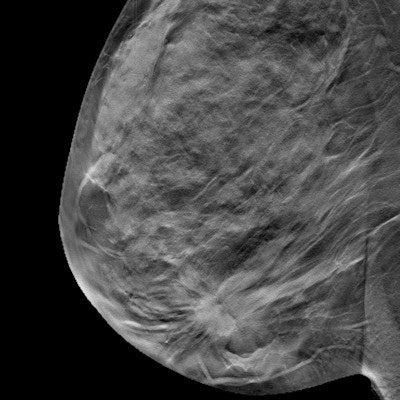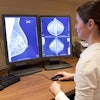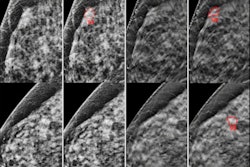
The combination of digital breast tomosynthesis (DBT) and digital mammography (DM) has been shown to improve diagnostic accuracy, but it could also be cost effective in the long run, according to research published April 22 in the Canadian Medical Association Journal.
The research team led by Sonya Cressman, PhD, from Simon Fraser University in British Columbia, found that adding DBT to digital mammography could be cost effective in a breast screening program, but only if it had an impact on reducing recall rates.
While combining DBT with digital mammography has been shown to decrease false positives and screening costs, there are concerns that the extra time needed for radiologists to interpret more images and the data-storage requirements of DBT may produce costs that outweigh any potential savings from the technology.
"As screening programs perform high volumes of breast exams, the decision to supplement DM-based screening with DBT requires data-driven analyses of the total costs and all downstream outcomes involved," authors wrote.
To answer the question, the team conducted a model-based economic analysis based on data from 112,249 screening participants in the British Columbia Cancer Breast Screening Program. The decision model simulated lifetime costs and outcomes for participants in breast cancer screening who were 40-74 years old between 2012 and 2017.
The model assumed that adding DBT to DM screening would cost an additional $44 per exam, would increase the cancer detection rate by 1.6 cancers per 1,000 exams, and would reduce the recall rate by an absolute 2.2%.
If digital breast tomosynthesis plus digital mammography were able to reduce absolute recall rates by more than 2.1%, the group's base-case scenario had an incremental cost-effectiveness ratio of $17,149 per quality-adjusted life year (QALY) -- far below the standard of $100,000 at which an intervention is considered to be cost-effective.
The model further found that the addition of DBT to DM screening would result in 0.027 QALY per person, and this benefit is achieved with an incremental cost of $470 per person.
"If DBT plus DM reduces absolute recall rates by at least 2.1%, and the additional cost of providing DBT exams is not higher than the established reimbursement fees, the technology would be considered a cost-effective addition to DM screening," the authors wrote.
Cressman told AuntMinnie.com that the results rely on evidence from the ongoing Tomosynthesis Mammographic Imaging Screening Trial, which is comparing 2D and 3D mammography for finding breast cancers. That study is expected to end by 2025.
"If DBT increases recall rates, then it is not likely to be considered cost-effective with the radiologist reimbursement fee structure that we refer to," Cressman said. "The study is complete, with all eyes on the T-MIST study now."




















